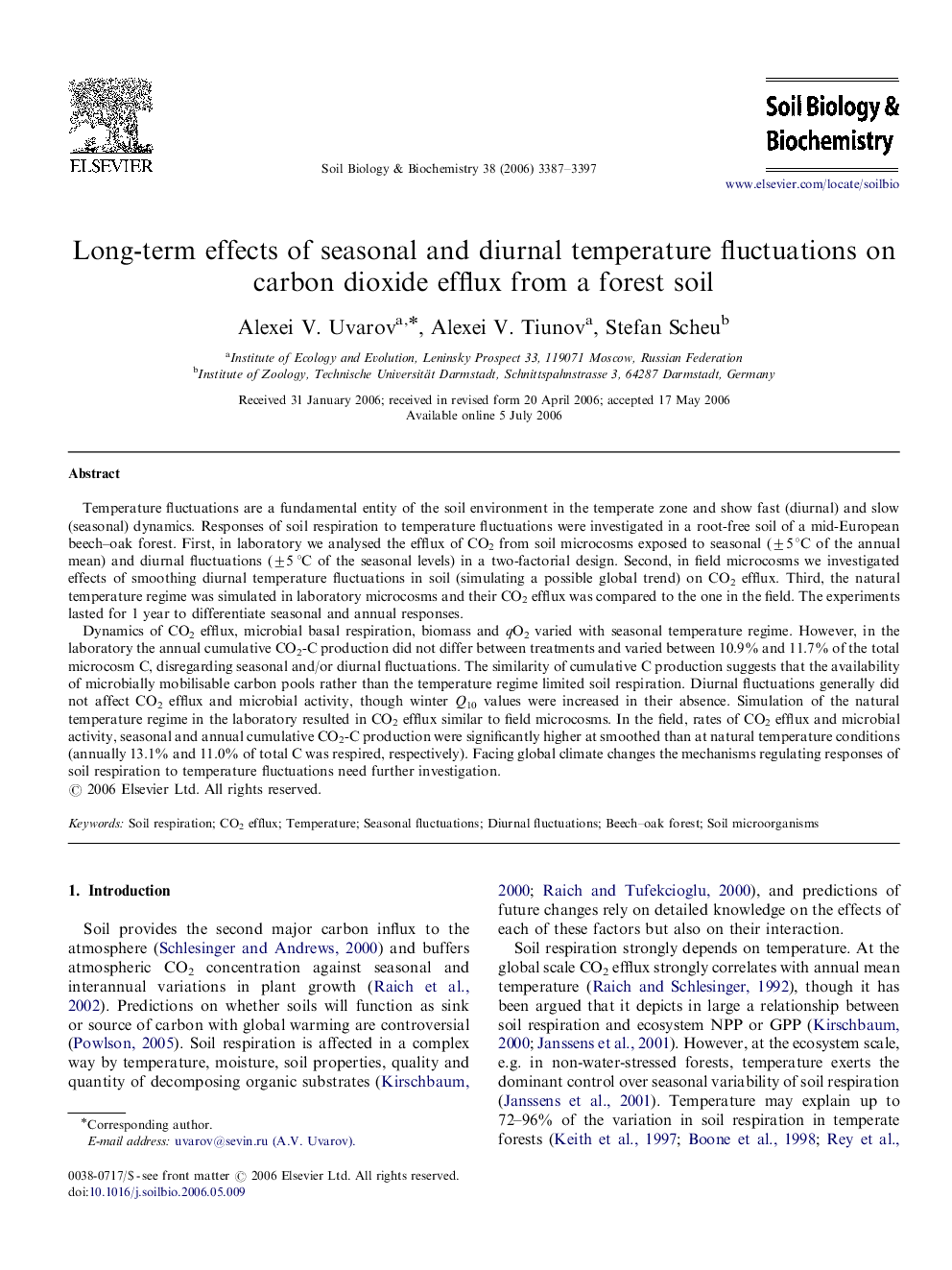| کد مقاله | کد نشریه | سال انتشار | مقاله انگلیسی | نسخه تمام متن |
|---|---|---|---|---|
| 2027080 | 1070085 | 2006 | 11 صفحه PDF | دانلود رایگان |

Temperature fluctuations are a fundamental entity of the soil environment in the temperate zone and show fast (diurnal) and slow (seasonal) dynamics. Responses of soil respiration to temperature fluctuations were investigated in a root-free soil of a mid-European beech–oak forest. First, in laboratory we analysed the efflux of CO2 from soil microcosms exposed to seasonal (±5 °C of the annual mean) and diurnal fluctuations (±5 °C of the seasonal levels) in a two-factorial design. Second, in field microcosms we investigated effects of smoothing diurnal temperature fluctuations in soil (simulating a possible global trend) on CO2 efflux. Third, the natural temperature regime was simulated in laboratory microcosms and their CO2 efflux was compared to the one in the field. The experiments lasted for 1 year to differentiate seasonal and annual responses.Dynamics of CO2 efflux, microbial basal respiration, biomass and qO2 varied with seasonal temperature regime. However, in the laboratory the annual cumulative CO2-C production did not differ between treatments and varied between 10.9% and 11.7% of the total microcosm C, disregarding seasonal and/or diurnal fluctuations. The similarity of cumulative C production suggests that the availability of microbially mobilisable carbon pools rather than the temperature regime limited soil respiration. Diurnal fluctuations generally did not affect CO2 efflux and microbial activity, though winter Q10 values were increased in their absence. Simulation of the natural temperature regime in the laboratory resulted in CO2 efflux similar to field microcosms. In the field, rates of CO2 efflux and microbial activity, seasonal and annual cumulative CO2-C production were significantly higher at smoothed than at natural temperature conditions (annually 13.1% and 11.0% of total C was respired, respectively). Facing global climate changes the mechanisms regulating responses of soil respiration to temperature fluctuations need further investigation.
Journal: Soil Biology and Biochemistry - Volume 38, Issue 12, December 2006, Pages 3387–3397